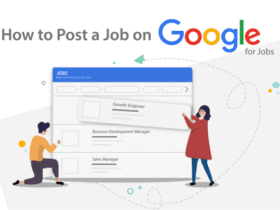Recruiting the finest workforce has always been challenging for recruiters and HRMs (Human Resource Managers). It requires recruiters to pay the utmost attention to detail in every process phase. The process starts with finding the productivity gap in the organisation. Once it is defined, the next step is to recruit personnel capable of filling that particular gap efficiently. It requires recruiters to reach job seekers and convince them to apply.
They require a powerful tool to communicate their needs, responsibilities, and duties affiliated with a particular job, as well as qualifications and skills required to fit specified requirements and perform given duties. The name of this tool is ‘Job Description’, also termed JD. The role of a job description is to specify essential responsibilities and qualifications for a particular role clearly and concisely. It is worth mentioning there is no one-size-fits-all solution to write job descriptions.
Organisations that follow a particular template to write job descriptions for every vacant position often need help finding the finest professionals for the post. 52% of job seekers make up their minds to apply for a position based on the quality of the job description. This figure shows the importance of a quality job description.
Hence, an average JD as a formality is out of the question if you need the finest professional to fill a vacant post.
This article discusses a few practices with examples of how to write job descriptions.
Reading it will significantly help you write a perfect job description that quickly grabs the attention of the finest professionals who will be happy to join your organisation. Read on to learn more.
Clearly Define the Job Title
The process of writing a job description starts with defining the job title. Specify the job title according to the field and the seniority level. A targeted job title, including key phrases, will do the trick. The language you use to define the job title should be easy to understand. There is no need to use terms used internally to define a job title.
This practice will make it difficult for relevant job seekers to understand. For instance, if you are looking for a person capable of leading the team responsible for maintaining the database and fixing issues that arise over time, you can define the job title as “Senior Database Engineer”. This practice will grab the attention of people with sufficient experience in database engineering.
Start with a Job Summary
After defining a job title, don’t jump to the required qualifications and skills. Instead, start with a job summary. This job summary should be compelling, featuring all characteristics needed to grab the attention of job seekers, including highly qualified professionals. The job summary should feature an overview of your company and the expectations from the ideal candidate.
A job summary is when you present your company as a brand and hook job seekers by describing its culture.
Describe your company culture in a way that job seekers feel the urge to apply for the specified position in your company. Around 72% of job seekers want to know about a company and its culture before applying. Additionally, specify the job location in the summary. An example of a specified location is “3959 Fairlands Drive, Pleasanton, CA 94588”.
Describe Duties and Responsibilities
After writing the job summary, it is time to add duties and responsibilities that the ideal candidate should perform after recruitment. Start with core responsibilities in the form of a list. Ensure the inclusion of responsibilities considered different but special requirements of your company.
For instance, you may need to include “Social Media Expertise” while looking for a copywriter. The abovementioned practice will help job seekers analyse their compatibility with the specified job.
You also need to outline the day-to-day duties of the person hired to fill a particular post. Doing so will help candidates understand the work culture and daily tasks affiliated with the job.
Lastly, you will specify the lead who will be taking reports from the hired person and how to perform various job-related tasks to describe how the position fits in an organisation.
Add Required Qualifications and Skills
The part of the job description that lists various qualifications and skills needed to fill a job is a perfect tool for job seekers to determine their compatibility with a specified position. You will include all the qualifications required for this purpose, particularly emphasising the major. If multiple majors are compatible, specify all of them.
Additionally, specify the required previous work experience to avoid applications from under-experienced people. After educational qualification and work experience, list skills you need in an ideal candidate.
By skills, don’t just mention necessary hard skills that are obvious for a person holding a specific position in the organisation. List a few soft skills that can make the hired person a good worker. Such soft skills include hybrid competence, teamwork, and time management.
Mention Salary and Perks
The main objective of anyone switching jobs or applying for a new one is to get an exceptional package in terms of salary and benefits. To make your job description attractive for highly qualified personnel, mentioning salary packages and relevant perks is necessary. If you don’t want to define a specific amount as a starting salary, you can mention a bracket so that people applying for the job know what they will get from the company. For instance, you can define salary bracket as $3500 – $4500.
In addition to defining the exact amount of the starting salary package or the payment bracket, you must also mention additional perks and benefits of joining your company.
This practice will help you make the job description lucrative and enticing for people. For instance, you can list perks like insurance covering medical, dental, and vision treatment expenses, flexible work hours, number of allowed leaves per month, and number of company-sponsored tours annually.
Proofread the Description Before Sharing
Finally, the practice that will help you create a good impression with your job description is its impeccable content. If the content of the job description written on your company’s behalf features grammatical and spelling mistakes, questions will be raised about the professionalism of your company. Many people may give up applying for a job in your company because of this frivolous issue. Hence, ensuring a job description without grammar mistakes is a must.
You need to assign the task of writing a job description to a seasoned copywriter to ensure a clear, concise, and meaningful draft. However, once you get the rough draft on your desk, don’t quickly publish it across various channels. Instead, use a reliable online grammar check to ensure no grammatical or spelling mistakes in your job description. Such a tool will help you quickly identify minor or severe mistakes. You can easily rectify them and ensure a perfect job description.
















